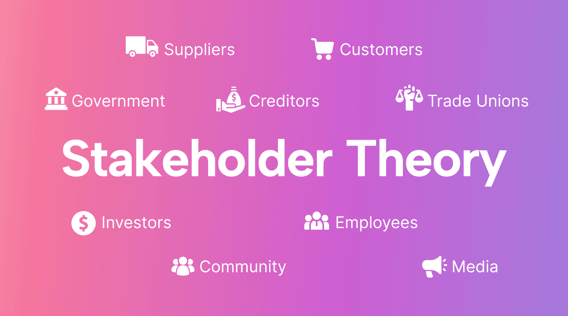Have you ever asked yourself who has a stake in the outcome while working on a project? If you have, you’re not alone.
There's an age-old debate between serving shareholders and serving a broader spectrum of stakeholders. This debate has created intriguing discussions in boardrooms and strategy meetings.
Some argue that the primary duty of a company is to its shareholders. However, many believe this vision is shortsighted. And totally ignores social responsibility.
This article will explain the fundamentals of stakeholder theory. It will also provide an example and guide you on applying it in an organizational context.
What is stakeholder theory?
Stakeholder theory encourages a company to value the interests of all its stakeholders. A business must make decisions for the good of everyone involved, not just those who own shares.
Stakeholder theory is a holistic approach to business stakeholder management. Success is measured in financial terms and how it impacts all stakeholders. Stakeholders include everyone affected by the company’s actions, from customers to employees, suppliers, and the local community.
This idea goes beyond making profits and focuses on being a responsible member of the community and the world. It’s a stakeholder approach that values stakeholders, not just shareholders.
The evolution of the stakeholder theory
In the early days, businesses focused on shareholder profit (many still do). But as companies grew and their impact on the world became apparent, the need for a broader, more holistic approach surfaced.
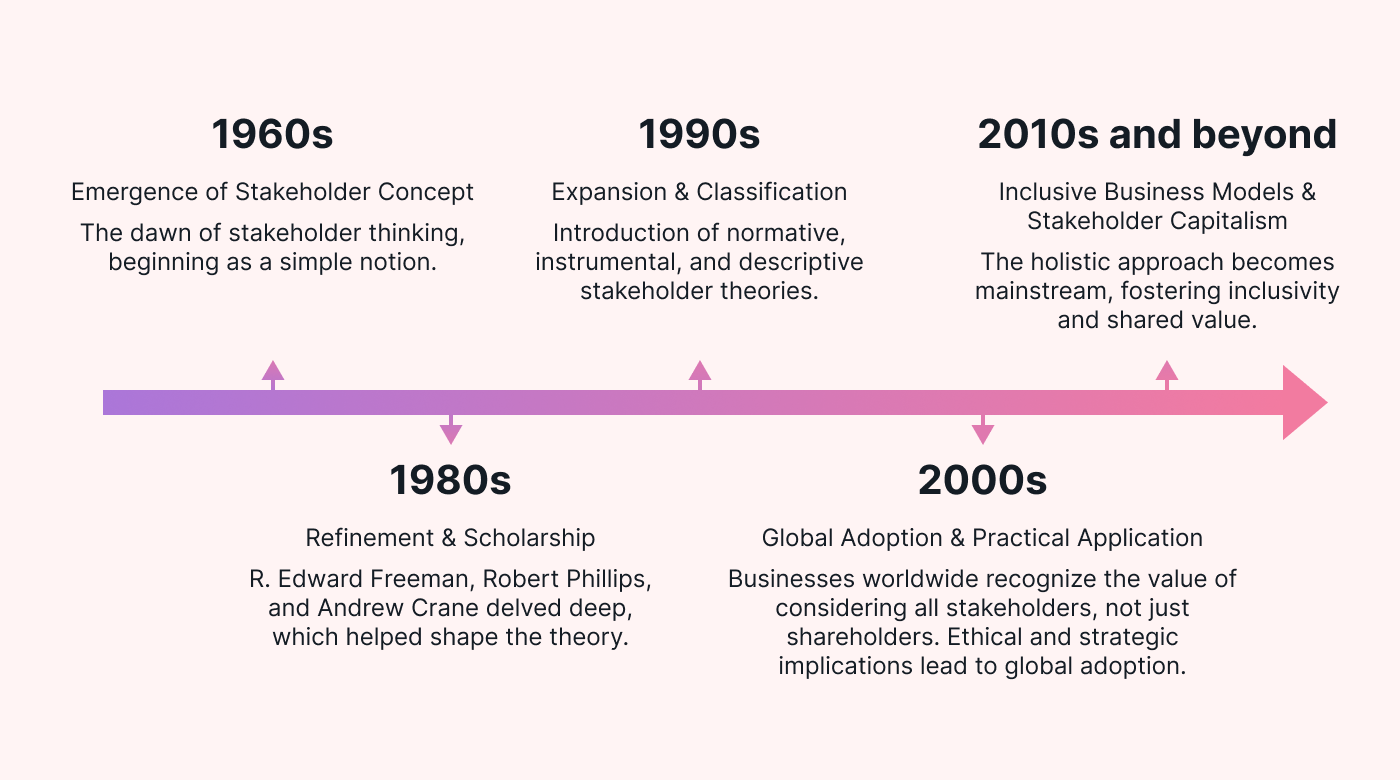 |
Since R. Edward Freeman—considered the ‘father of stakeholder theory’—wrote Strategic Management: A Stakeholder Approach in 1984, stakeholder theory has become widely accepted.
Nowadays, many businesses think about more than making money. They think about how they affect society and the environment. This change shows that companies are starting to care more about their role in society and the environment.
Stakeholder vs. shareholder theory
The main difference between stakeholder and shareholder theory is whom a company prioritizes. Shareholder theory argues that a company’s primary duty is to its shareholders, meaning the goal is maximizing profits.
On the other hand, stakeholder theory suggests that a company is responsible to all its stakeholders, not just shareholders. This means considering how business decisions impact everyone, including internal stakeholders like employees and project managers and external stakeholders like customers, the environment, and others.
For example, where shareholder theory would focus on how a new product boosts profits, stakeholder theory would consider how this product impacts the environment and customer satisfaction.
The bottom line is that stakeholder theory insists on a more balanced and ethical way of doing business—one that considers the well-being of society, not just profit margins. This way of thinking is essential in today’s world, where people expect companies to have high business ethics and social responsibility standards.
Stakeholder theory example
Let’s look at a simple example to see stakeholder theory in action.
Suppose we have a small landscaping company, “GreenScape”. GreenScape has several groups to keep in mind, each with its own interests.
- Customers: They want good service and fair prices. If they're not happy, they might go to GreenScape's competitors.
- Shareholders and investors: If GreenScape has shareholders, they want to make money from their investments.
- Suppliers: They provide GreenScape with what it needs, like plants and tools. Keeping a good relationship with them means GreenScape gets what it needs reliably and (possibly) at better prices.
- Employees: These are the people who do the actual landscaping work. If you treat them well with fair pay and a nice place to work, they'll work harder and stay with the company longer.
- Local community and environment: How GreenScape works can impact the area it operates in. Using eco-friendly practices and participating in or sponsoring local activities helps GreenScape earn community trust.
- Friends and family: They might not be official stakeholders, but their support and recommendations can help a small business like GreenScape grow.
- Government: As is true for any business, GreenScape needs to follow the rules and regulations. It keeps them out of trouble and maintains a good image.
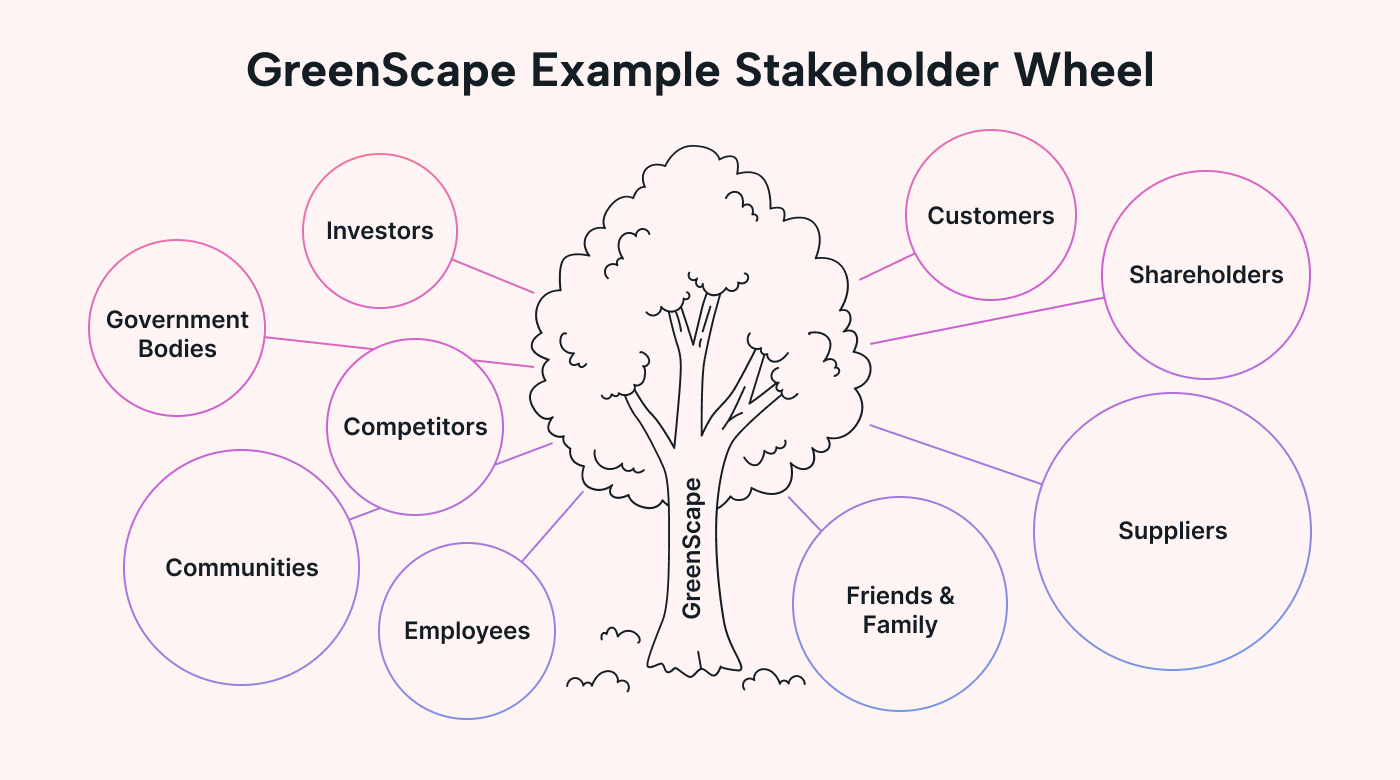 |
If you’re a business owner, thinking about all these groups as somehow related to your business might seem foreign. But if you step back and “believe” that your company has an impact on at least some of these groups, and if you believe that matters, you can come up with ideas that matter to them in a way that helps your business.
So, in our example, GreenScape can better understand the needs of each type of stakeholder in ways that endear it to, or at least make it more palatable to, them.
For example, it might invest in methods that are more eco-friendly. That might cost more up front. But, it can also attract more customers who care about the environment, and can lower its cost to deliver services in the long term (not to mention the positive impact on the environment of fewer pollutants).
So, rather than being a quagmire,, embracing stakeholder theory can be a practical and more thoughtful approach to running its business. It can become more lucrative in the traditional sense because it meets the needs of more stakeholders. In doing so, it can build a community presence and earn repeat business. Because it doesn’t just “do landscaping”, it does it as a highly-regarded contributing member of the community.
How to implement the principles of stakeholder theory
Implementing stakeholder theory in your business takes a change in mindset to recognize the mutual benefit gained with at least some of your stakeholder groups. It can lead to better relationships that lead to sustainable growth. Here are the steps you can follow:
Conduct a stakeholder analysis
Here in the first step, you identify your stakeholders. Who (or what groups) are they? What do they care about? What is their vested interest in your business? How does what your company offers affect each of them?
It should be easier to define the answers for internal stakeholders, like employees, or your boss. But it may be harder to do this for external stakeholders, like suppliers, investors, the community, labor unions, and certainly customers. Then, of course, come the shareholders.
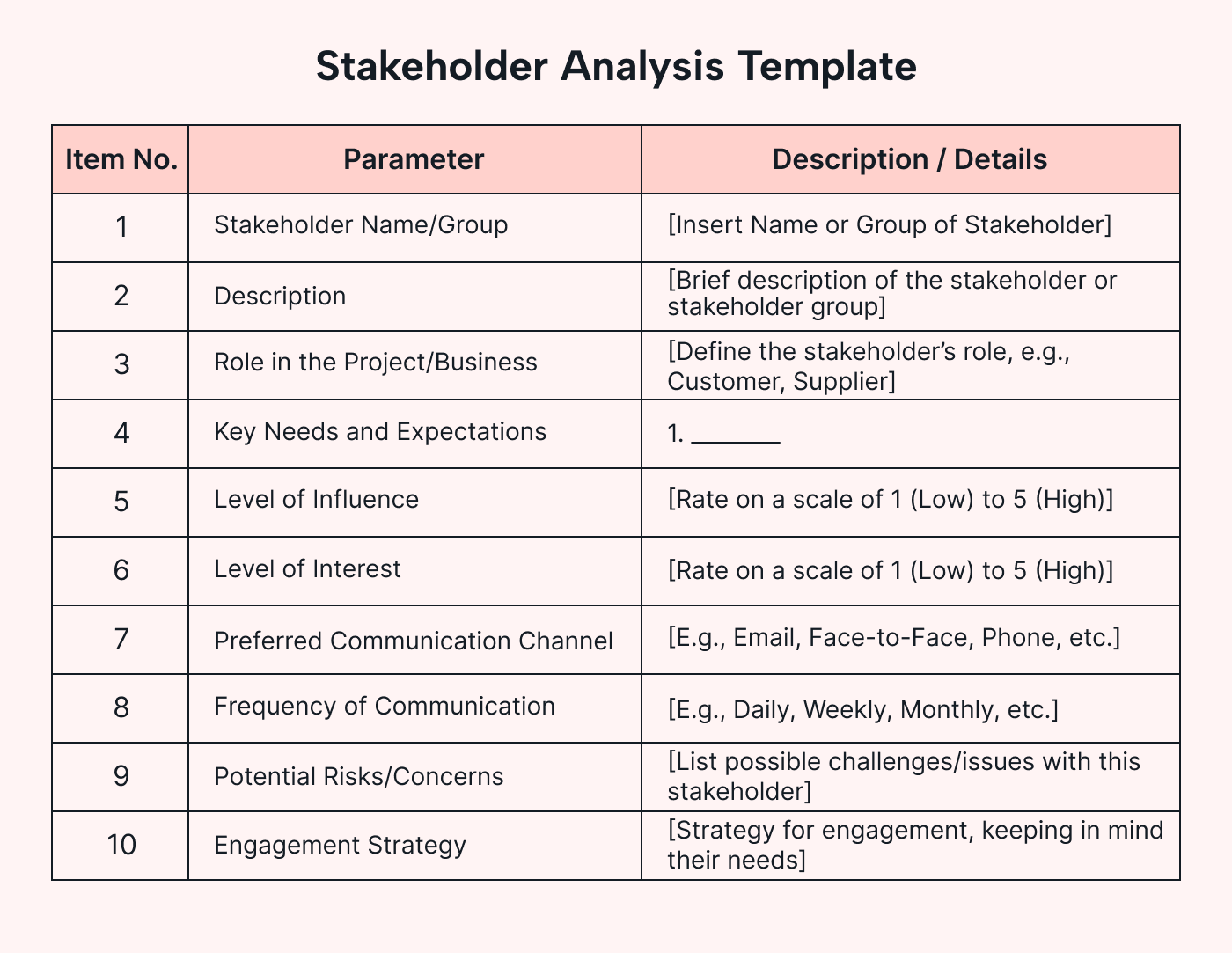 |
What does each group want from you – is it financial support? What do they think of you now vs. what you’d like them to think? What if they object to something you want to do or are doing? If you can address the issue, as In the case of GreenScape, using a greener solution could increase both business and reputation.
So, environmentalists want you to use non-toxic chemicals. Your employees might want better pay, but also other rewards, like training and better working conditions.
For each stakeholder, can you win them over? If not, can you manage their opposition? Either way, with stakeholder theory, you win.Organize this information and note each stakeholder’s interests and influence on your business. Prioritize them by how involved and important they are with your business or your projects.
Create a stakeholder map
Once you know who your stakeholders are, picture their relationships and influence through a stakeholder map.
A stakeholder map is a visual method that helps place stakeholders into buckets or quadrants based on their level of interest and power. The stakeholders that fall into the High Interest / High Power quadrant warrant the most attention. These might be investors or even a crucial supplier or contractor. They’re the ones who deserve the most intense focus.
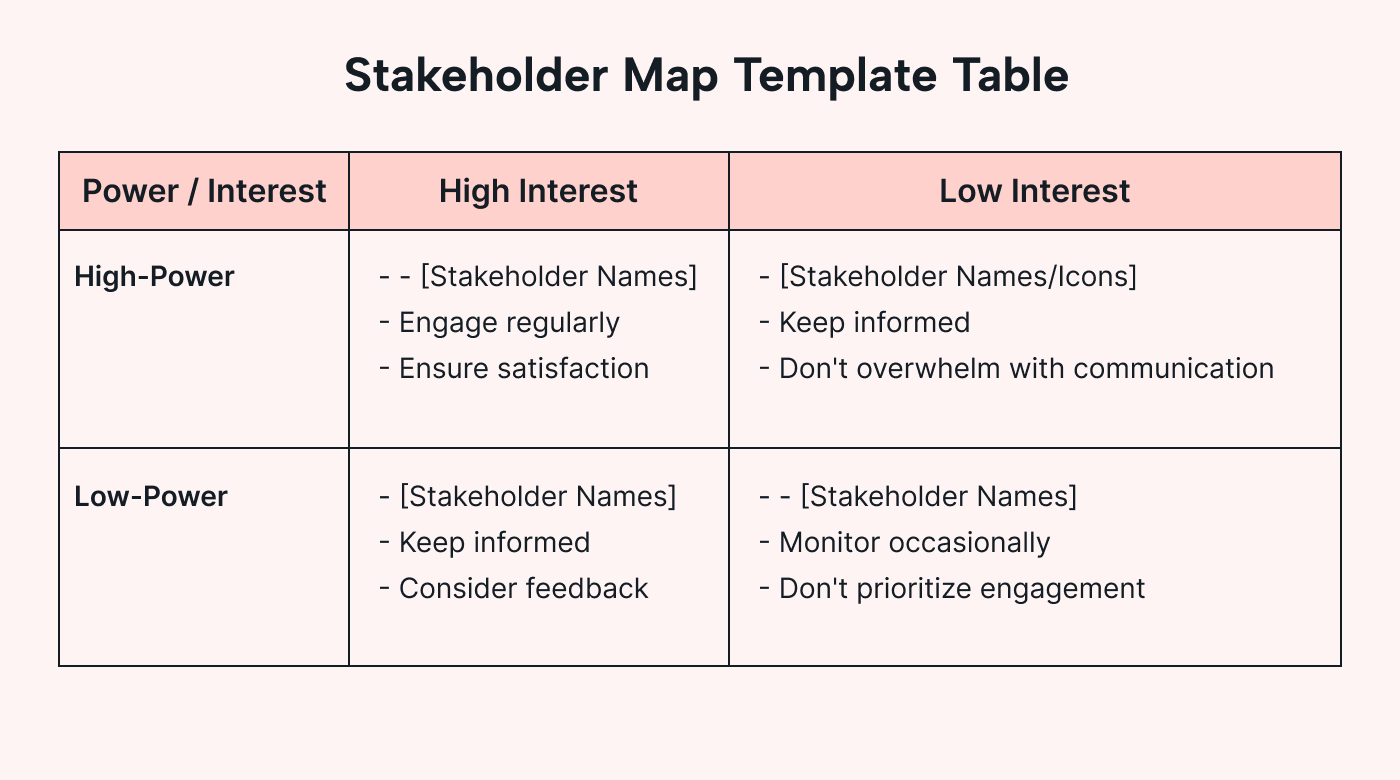 |
On the other hand, those in the Low Interest / Low-Power quadrant should be low priority and monitored occasionally to make sure their status remains the same.
Mapping stakeholders in this way not only lets you plot each in the most relevant place in each quadrant, but helps you make strategic decisions about where your focus should be. Also, it can help determine how to approach each one.
Develop a stakeholder engagement plan
Now that you’ve identified who your stakeholders are and how they interact with your business or project, you can develop a plan for engaging with each of them. Concentrate first on the most influential and involved stakeholders. Decide on how best to work with each one.
Where appropriate, you may even invite a particular stakeholder to participate in the development of the plan.
Your plan for each stakeholder, or stakeholder type will depend on who they are. For customers, ways of receiving regular feedback on products, features or services will be important. For key contractors, you need a way to make sure your expectations of them are clear and establish two-way feedback mechanisms so this clarity continues.
For the community, you might develop outreach programs, or engage with specific community groups or resources in ways that are mutually beneficial. And for regulators, provide a way to obtain the latest information. Of course, make sure your team behaves in accordance.
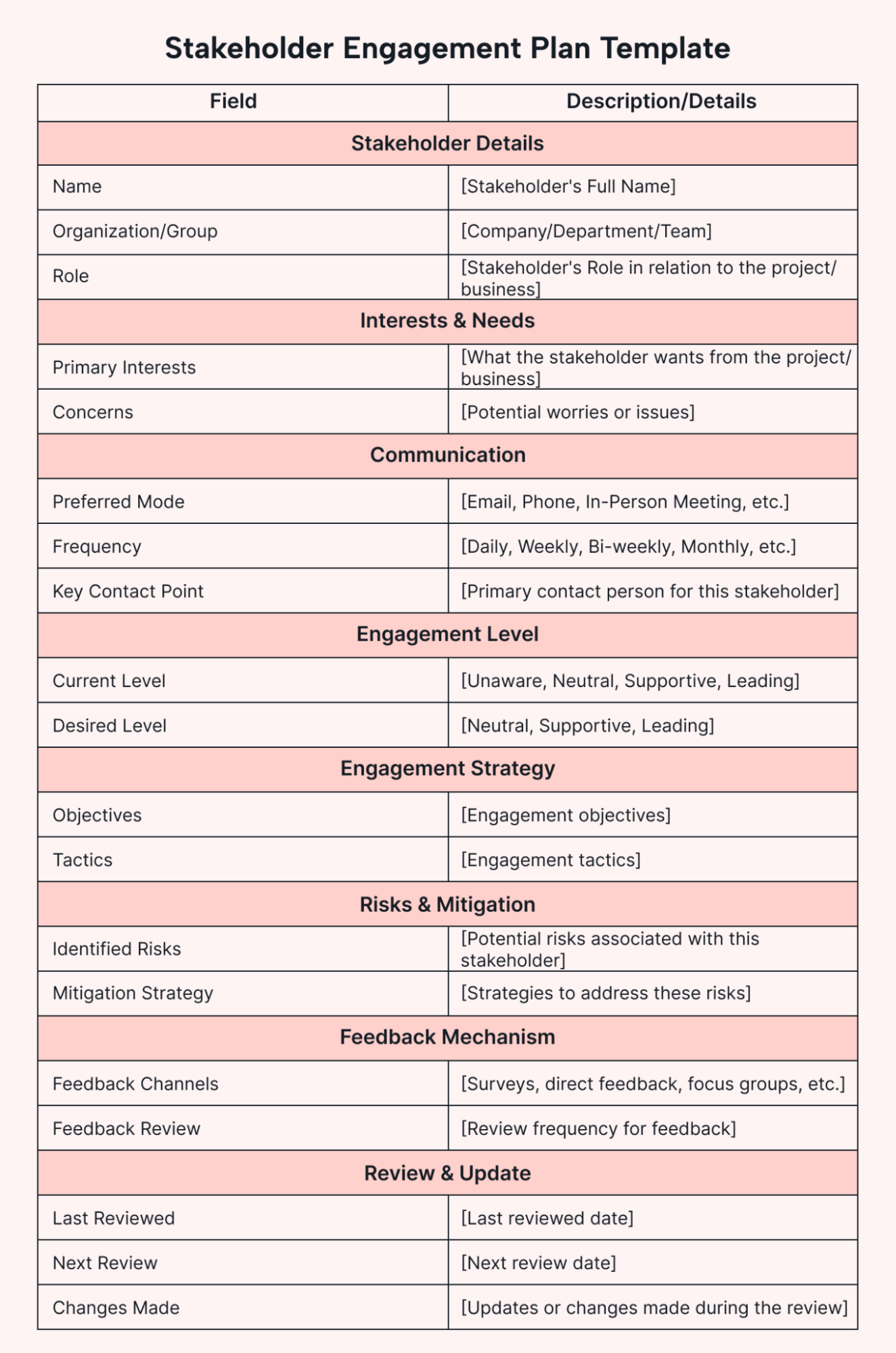 |
From the engagement plan, you can develop an approach to communicating with relevant stakeholders. Each plan can help you establish meaningful goals and objectives for working with groups of stakeholders, and develop a mutual appreciation for your role and the role they play in your business (or project).
Evaluate your stakeholder performance
If it’s worth doing, it’s worth measuring, so you can assess what results you’re getting by applying stakeholder theory. You established goals and objectives in this process. How is customer satisfaction improving? What’s your change in employee retention? How will you assess the impact of community engagement?
All of these can be turned into metrics. And those metrics can be visualized in a dashboard template. Use one to make sure your efforts are paying off, and to tell you when to adjust your strategies to perform even better.
Similar kinds of businesses might have similar stakeholder groups. But, since every business is unique, so are your particular stakeholders. As is how you want to engage with them. Every organization needs to assess its own context, and adapt the implementation steps for stakeholder theory accordingly.
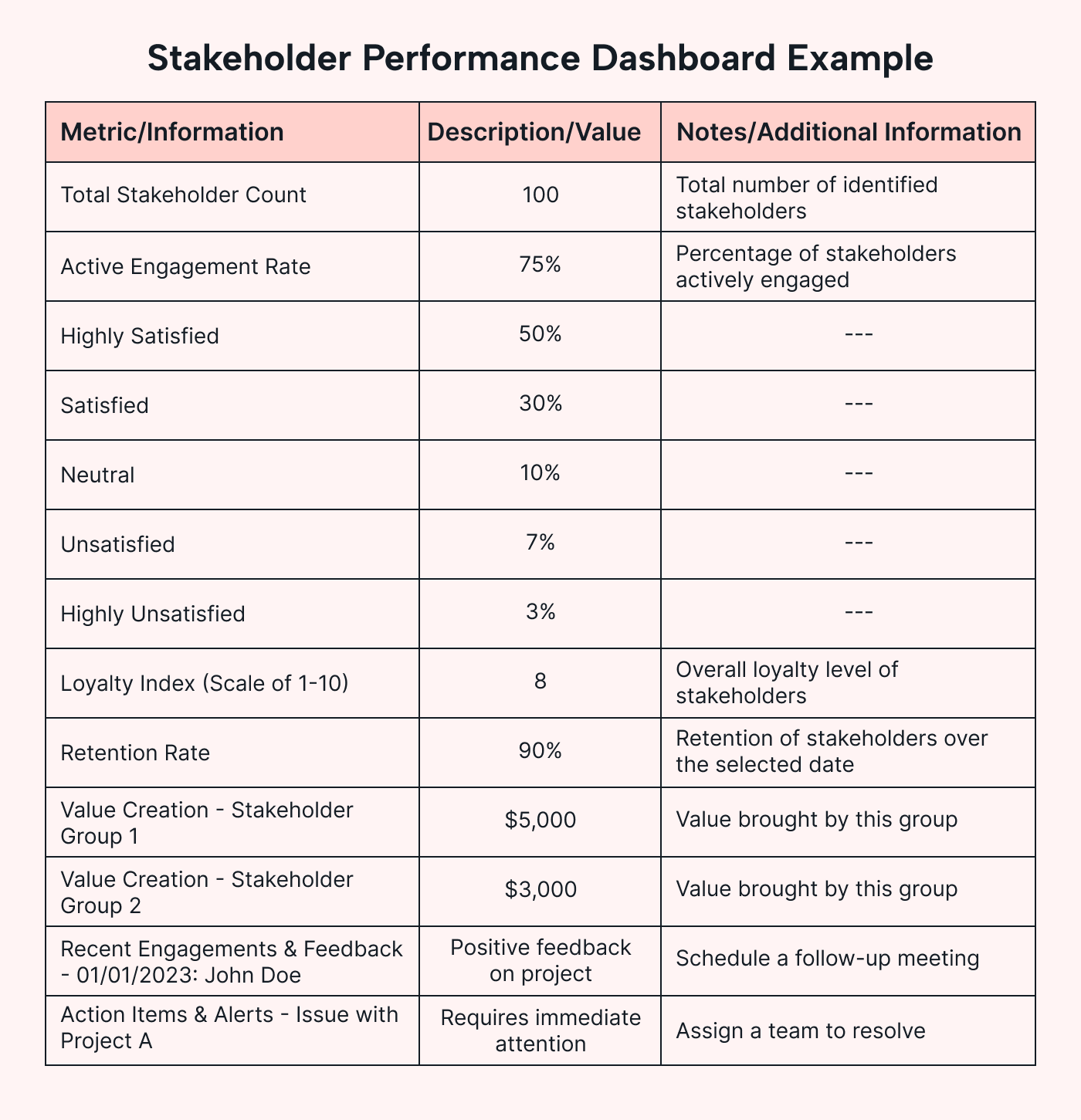 |
But whatever the context, thinking more inclusively about stakeholders, and building stakeholder theory into your practices can reap big benefits.
You can view stakeholders as albatrosses, or you can see them as opportunities to satisfy their needs, build your reputation in the process, and create greater success for your business.
Benefits and challenges of stakeholder theory
While stakeholder theory is a growing influence in terms of a different way of looking at business practices, like most everything else, it has advantages and disadvantages (or at least challenges).
Traditionally, directors of companies have prioritized shareholders over stakeholders. But shareholders, except for their monetary investments, really don’t impact a company’s operations. Stakeholders do. So directors and owners need to be responsible to both.
Benefits of stakeholder theory
Build a stronger reputation: Companies can create a positive image by considering the needs of more than just its shareholders. Caring about the community in which it operates, for instance, or becoming known for fair labor practices, can lead to trust in the community and a happier, more engaged workforce.
Improve public relations: Related to a stronger reputation is improved public relations. If a landscape company like GreenScape dumps fertilizer into the local stream because that’s the least expensive way to get rid of it, it could very well lead to a public relations disaster. Instead, if it contributes a green space to the community, it can lead to improved relationships with both citizens and the local government.
Increase customer loyalty: Companies can strengthen relationships with customers by acting on their feedback and concerns, and delivering great customer service. On the flip side, doing something that breaches trust, such a failing to act decisively on a safety concern, can cause drops in market value – as much as 20 - 56%.
Increase employee satisfaction and retention: When employees feel they matter, they tend to be more committed to, and stay longer with, the company. For example, recognition and opportunities for career development show the employees that the company values them, and is committed to their professional growth.
Drive innovation for the future: Stakeholder theory encourages businesses to focus on more than just short-term returns. It encourages innovation to meet future needs of stakeholders. It’s not just the quick “killing” that matters, but building the foundation for long-term value.
Manage risk: Understanding and acting on stakeholder concerns can help companies anticipate potential risks. By doing so, it can be ready for challenges to its stakeholders (and itself), and change that is ubiquitous.
Challenges of stakeholder theory
The challenges are not so much faults with stakeholder theory, but difficulties in implementing it correctly.
Identifying and prioritizing stakeholders: At first, it can be hard to correctly identify who the stakeholders are and to place them correctly in the stakeholder map. This can lead to difficulty and error in decision-making and resource allocation.
Managing conflicting interests: It’s usually not possible to please every stakeholder group. That’s why it’s important to prioritize the stakeholders with the most interest and influence, and work on those first. Also, the managers who are deploying stakeholder theory may not always agree.
Measuring the impact of actions: Perhaps one of the hardest things to get right is the metrics. How to determine which actions are producing which improvements can be hard to determine. Practice can make this easier.
Larger short-term costs: Addressing the needs of certain stakeholders might mean spending more money upfront, which can affect profits in the short term. For example, investing in better customer service training may increase costs.
To address the challenges, remember why you’re implementing stakeholder theory. It’s important to balance the short- vs long-term trade-offs and avoid losing sight of the gains it can provide.
By understanding the reasons to implement, and the challenges you may face by doing so, you are more likely to handle stakeholder theory’s challenges and maximize its benefits. Change is always hard. Staying the course, can set up your business for long-term growth.
Grow your business with stakeholders and Motion
If you’re a business owner, you’ve likely been focused on employees and customers, (and if you’re big enough, shareholders). And team members, contractors, and sponsors if you’re a project manager.
Stakeholder theory gives you a structured way to broaden your outlook and reap the mutual benefits to be gained by taking a different view of all your stakeholders. This different view, and building and executing a plan that delivers the benefits of stakeholder theory can have big returns.
The benefits and big returns include more (and more loyal) customers, a better reputation, and sustainable growth as a beloved (or at least respected) part of your community. But the keywords here are “different view” and “building and executing a plan.”
Stakeholder theory brings that “different view,” Motion brings you the ability to “build and execute a plan,” Use Motion to put theory into action, and grow your business in a thoughtful way.

